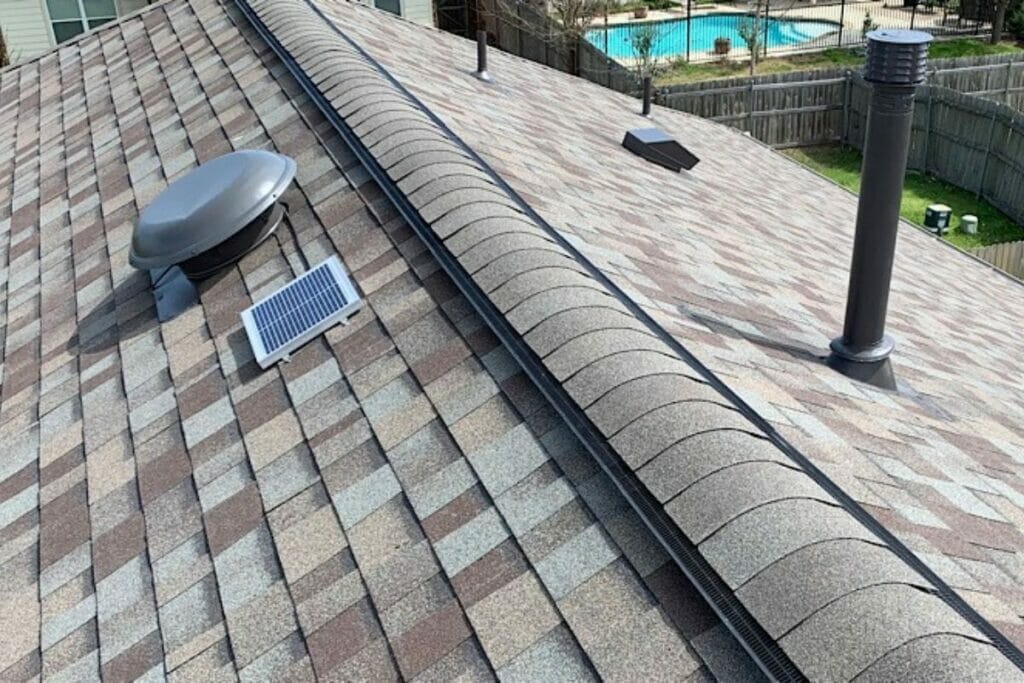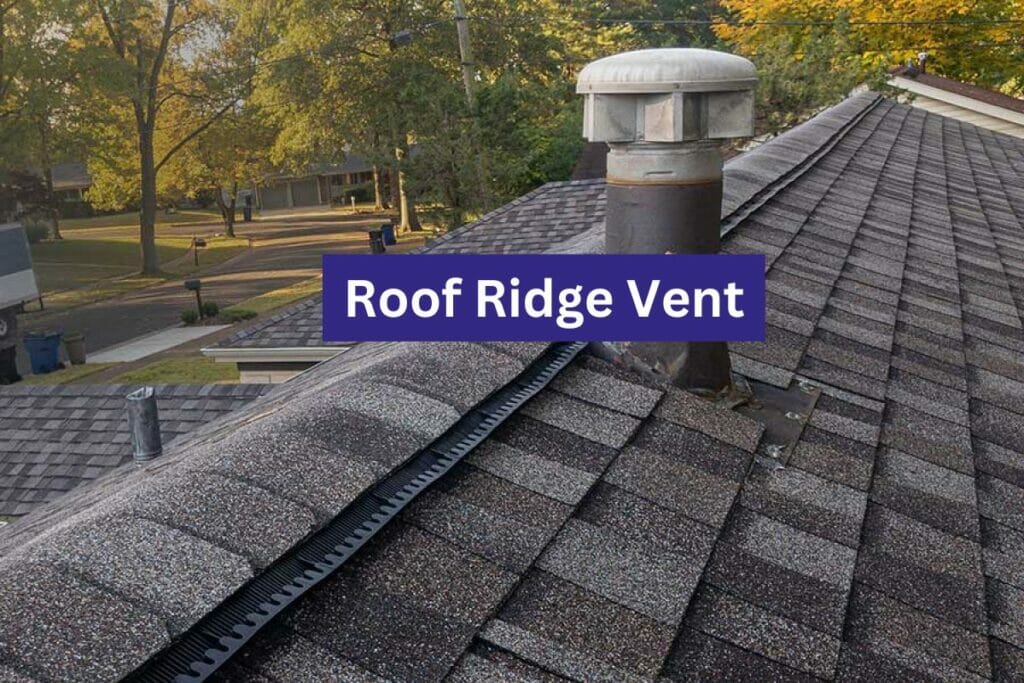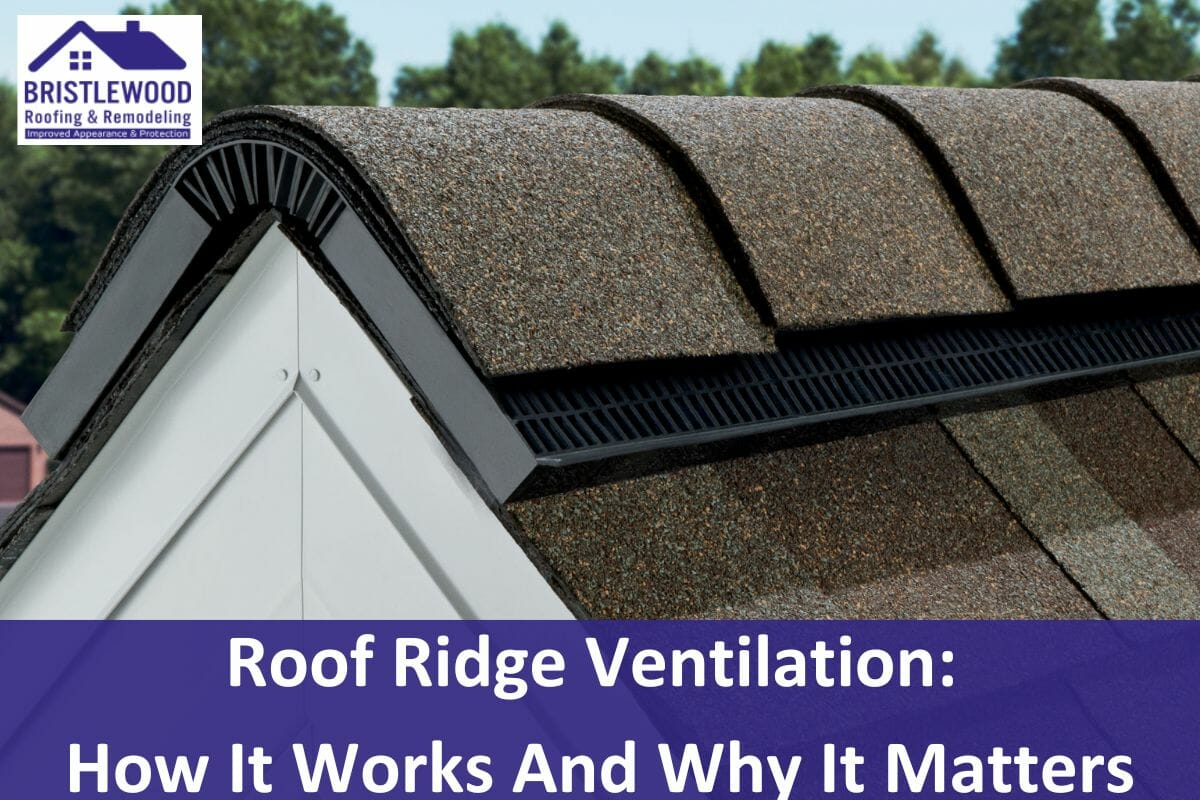Are you a homeowner looking to understand the often-overlooked aspect of roof ridge ventilation? If so, you’ve come to the right place! In this comprehensive guide, we’ll take a closer look at ridge vents and what makes them such a vital roofing component in the health and longevity of your home.
We all know how hot, humid climates can wreak havoc on our homes, leading to moisture buildup, mold growth, and dreaded ice dams. That’s why effective roof ventilation is critical and ridge vents are an efficient solution. With ridge vents, warm air is exhausted from the peak of the roof, allowing your home to breathe and stay healthy.
In this blog post, we’ll cover exactly what these vents are, why they’re important, and how they can help you maintain the health of your home. You’ll also learn about the different types of ridge vents, how to install them, and how to ensure they’re working properly.
By the end of this guide, you’ll have a thorough understanding of roof ridge ventilation and the role it plays in your home. So, buckle up, and let’s get started!
What Is Roof Ridge Ventilation?
Roof ridge ventilation is a crucial component of your home’s ventilation system. Ridge vents are installed at the peak of your roofline and provide a continuous outlet for hot air to escape from your attic, preventing moisture buildup, mold growth, and ice dams.
Several types of ridge vents are available, including aluminum, plastic, shingle-over, and non-shingle-over vents. The right choice depends on your aesthetic preferences and budget. It’s important to ensure proper sizing to achieve optimal performance. Underestimating the number of vents needed for the size of your home can lead to ineffective ventilation.
Ridge vents are good at exhausting hot air from your home. Their simple design makes them less prone to mechanical failure compared to other vent options. Additionally, ridge vents are almost invisible in most home designs, adding aesthetic value to your roof.
However, it’s important to note that ridge vents alone may not be sufficient enough for larger homes or complex roof designs. Paring the ridge vents with intake vents, such as soffit vents, may be necessary to ensure proper ventilation in these cases.

◾ The Importance Of Roof Ridge Ventilation In All Climates
Roof ridge ventilation is crucial in all climates, from cold winters to hot summers. Proper airflow in your attic is essential to combat moisture buildup and prevent damage to your home’s structure. Ridge vents ensure that hot air is removed from your attic, preventing dampness that can lead to mold growth, ice dams, and other common issues.
There are numerous benefits to installing roof ridge vents. They are cost-effective, relatively easy to install, and can prolong your roof’s lifespan by preventing water damage. The installation process is straightforward, typically only requiring basic DIY skills. However, it’s essential to size the vents correctly according to industry standards to ensure optimal airflow, as well as select a type of vent that is compatible with your roofing material.
Regular maintenance checks are necessary to ensure that your ridge vents operate smoothly and last a while. After severe weather conditions or high winds, inspecting the vents for any material movement or damage that could impact their function, is important.
While ridge vents perform well in most climates, it’s crucial to consider local climate conditions. Water infiltration through ridge vents may be a concern in areas that receive frequent wind-driven rain or snowfall. Considering these factors will help you make an informed decision about the best ventilation option for your home.
◾ How Effective Are Ridge Vents?
You’ll be amazed by how effective ridge vents are at maintaining an ideal attic temperature and preventing moisture buildup. Ridge vents exhaust hot air from out the top of your roof, providing continuous ventilation along its entire length. This advantage sets them apart from alternative options like box or gable vents, ensuring no area in your attic is left unattended.
It’s important to note that while ridge vents are relatively inexpensive and easy to install, proper installation is crucial for optimal performance. Ventilation requirements must be met to ensure the ridge vent works effectively. Adequate space on your home for intake vents such as soffit vents is necessary to allow fresh air to circulate throughout the home and attic.
Maintenance requirements for ridge vents are minimal compared to other vent types. However, occasional check-ups after severe weather conditions are helpful in ensuring they continue to function properly.
Beyond functionality and efficiency, ridge vents have a subtle aesthetic appeal that seamlessly integrates into a home’s design. This can potentially have a positive impact on your home’s value. Good ventilation systems are sought after by home buyers, as they contribute significantly to energy efficiency and structural health.
◾ Cost And Ease Of Installation
Installing ridge vents is a doable DIY project that doesn’t require a significant investment. Ridge vents are relatively inexpensive to purchase and you can save money on professional installation costs if you’re comfortable with basic DIY tasks.
The cost of ridge vents varies based on the type chosen, and the size of your roof. Basic ridge vents range from $5 to $10 per linear foot, while premium ridge vents can cost up to $15 per linear foot. If you choose a professional installation, costs can range from $400 to over $1,000, depending on the complexity of the task.
Opting for ridge vents is cost-effective in the long run. They reduce energy bills by keeping your home cooler in the summer and warmer in the winter, reducing the reliance on air conditioning and heating systems. Proper ventilation also minimizes moisture buildup, extending the life of your roof and saving you money on costly repairs or replacements. Maintenance requirements for ridge vents are minimal, as they are designed to withstand the test of time.
While a DIY installation is an option, avoiding common mistakes such as improper nailing patterns or skipping underlayment is important, and can lead to leaks or reduced ventilation efficiency. If you’re unsure about any aspect of the installation process or lack the required tools, we advise hiring a professional to help ensure correct implementation and avoid potential issues.
◾ Energy-Saving Benefits Of Ridge Vents
Installing ridge vents can significantly improve the energy efficiency of your home. By allowing hot air to escape from the attic, ridge vents reduce the workload on your air conditioning system during the hot summer months. This results in energy savings and lower utility bills.
Ridge vents also provide energy savings in the winter by preventing moisture buildup in the attic. Moisture can lead to ice dams and other problems that can damage your roof and make it more difficult for your heating system to warm up your home. Additionally, a well-ventilated attic reduces maintenance requirements over time by mitigating problems like mold growth and wood rot caused by excessive moisture.
Installing ridge vents is not only about saving money on energy bills but also a long-term investment in enhancing home comfort and reducing environmental impact. Well-ventilated attics ensure consistent indoor temperatures throughout all seasons, providing a comfortable living environment. They also contribute to minimizing a homeowner’s carbon footprint by reducing energy consumption and greenhouse gas emissions. The effectiveness of ridge vents makes them a preferred ventilation option for many experts.

◾ Extending The Life Of Your Roof With Ridge Vents
Roof ridge ventilation plays a crucial role in extending the life of your roof. High-quality ridge vents regulate temperature and humidity levels within the attic space, preventing rapid wear and tear caused by extreme temperature fluctuations. They also protect against moisture buildup, which can lead to material degradation and rotting.
1. Prolonged Durability:
Ridge vents enhance the lifespan of your roof by efficiently regulating temperature and humidity levels within the attic space. This helps prevent rapid wear and tear caused by extreme temperature fluctuations.
2. Moisture Protection:
By exhausting hot air along the length of the roof, ridge vents help keep moisture at bay, which could otherwise lead to material degradation or rotting.
3. Mold Prevention:
Damp conditions encourage mold growth, however, with effective ventilation through ridge vents, these damp conditions are mitigated, thus preventing any potential mold infestation.
4. Ice Dam Reduction:
In colder climates, poor ventilation can lead to ice dam formation along your roof’s edge causing significant damage over time. Ridge vents ensure warm air doesn’t get trapped within your attic, reducing the risk of ice dam development.
Choosing the right type of ridge vent is essential to achieve these benefits effectively, and comply with local building codes. Factors such as climate suitability, ease of installation, and cost-effectiveness should all be considered when deciding on the best type of vent for your home’s specific needs. Aluminum ridge vents are known for their durability, while shingle-over vents offer seamless integration with your roofing material. Overall, it’s important to strike a balance between functionality and aesthetics.
Investing wisely in a proficient installation of a ventilation solution will yield long-term benefits, such as sustained structural integrity, energy-efficient living conditions, and savings on reduced need for repairs or replacements.
◾ Local Considerations For Roof Ridge Ventilation
When choosing the right type of ridge vent for your home, it’s important to consider local climate conditions and building regulations. Building codes often specify ventilation requirements to promote safety and prevent damage from moisture buildup. These codes can vary depending on regional weather patterns, so it’s crucial to understand the rules in your area.
Warmer climates may require more intensive ventilation to combat heat accumulation, while colder locations may have different requirements. Selecting a type of vent that aligns with your local climate needs and codes is important.
Metal ridge vents are generally durable and resistant to different types of weather, but they may not blend in as neatly with different types of roofs. Shingle-over vents offer better aesthetic appeal but may require professional installation due to their complexity. Off-ridge vents are easy to install but may not provide as good of a ventilation solution as ridge vents.
Choosing the right type of vent involves considering climate suitability, installation ease, and the long-term impact on roof maintenance. While some homeowners prefer DIY installations, others opt for professional installation services, especially for complex roofing systems or strict building codes.
Proper installation is crucial for ridge vents to function properly. Improperly installed vents can lead to leaks during heavy rain or snowfall, negating any energy-saving benefits from improved attic ventilation.
When considering cost-effectiveness, it’s important not to compromise on quality. Choosing a cheaply made vent can lead to more problems in the future, outweighing any initial savings.
Conclusion
Roof ridge ventilation is critical to your home’s ventilation system, providing continuous airflow and preventing moisture buildup. Proper installation and maintenance of ridge vents can significantly improve your home’s energy efficiency, prolong the life of your roof, and enhance the overall comfort of your living environment.
By considering factors such as local climate conditions, building codes, and the specific needs of your home, you can make an informed decision about the type of ridge vent that will best suit your needs. Whether you choose to install ridge vents yourself or hire professionals, it’s important to ensure proper installation to reap the full benefits of this ventilation solution.
Investing in ridge vents is an investment in the long-term health of your home. With their cost-effectiveness, energy-saving benefits, and contribution to roof longevity, ridge vents are a practical and valuable addition to any home. So, take the necessary steps to ensure your home is well-ventilated and protected with quality roof ridge ventilation. Your home and your wallet will thank you!
Hire The Best Roofing Company In Central Ohio
Need a reliable roofing contractor in Central Ohio? Look no further than Bristlewood Roofing & Remodeling! Our experienced team of roofers are committed to providing quality work that stands the test of time. Contact us today for a free estimate, and let us help you get the roof you deserve! Call us today at (614) 307-5881!

